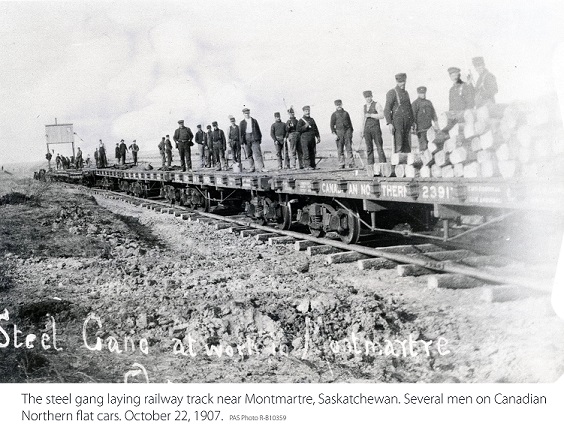Released on July 4, 2017
To celebrate the 150th anniversary of Canada’s Confederation, national, provincial and territorial archives in an historic collaboration of 14 institutions across Canada have selected 150 images and stories that illustrate how people have traversed our nation over years, decades and centuries, with a major focus on the role of the railway.This online exhibition, called The Ties that Bind Canada (http://rbcm.ca/tiesthatbind), gives life to the stories of those who came before us to form and bind communities through the development of transportation links over land, sea and ice. The completion of Canada’s railway system and its impact on building our nation is the starting point for this online gallery, but it’s not the only story. Even today, the movement of people and goods in remote areas of Canada relies on ingenuity and alternate forms of transportation, sometimes in very harsh conditions.
“The historic collaborative effort to build this Canada 150 legacy exhibit is reminiscent of the determination and resourcefulness of the people whose stories are being told,” Minister Responsible for the Provincial Capital Commission Christine Tell said. “Like those who built the transportation networks across this vast country, our archival community has banded together to preserve that history for future generations to learn and enjoy.”

Canada’s Indigenous Peoples are the original continental travellers and traders, inventing ways to move across remote areas like the interior and coastal edges of Nunavut where massive networks of trails were developed by Inuit.
This online exhibition was built for all Canadians to enjoy, but it’s also a valuable resource for students of Canadian history, educators, train enthusiasts and transportation fans. Poring over photos of the great transportation networks of Canada is itself an act of exploration.
Visitors to The Ties that Bind Canada may be surprised by the vastness of the northern Inuit transportation network or by the various ways people travelled from the prairies to coastal communities.
The Ties that Bind Canada features 150 examples of the innovation, perseverance and ingenuity required in getting from place to place. Text is written in both of Canada’s official languages, to encourage Canadians across the country to learn more about their communities, provinces and nation.
All aboard this commemorative #Canada150 project were Library and Archives Canada/Bibliothèque et Archives Canada, Yukon Archives, NWT Archives, Nunavut Archives Program, Royal British Columbia Museum and Archives, Provincial Archives of Alberta, Provincial Archives of Saskatchewan, Archives of Manitoba, Archives of Ontario, Bibliothèque et Archives nationales du Québec, Provincial Archives of New Brunswick, Nova Scotia Archives, Public Archives and Records Office of Prince Edward Island and The Rooms Provincial Archives Division, Newfoundland and Labrador.
To learn more about the people and places where you live, please visit your provincial archives at www.saskarchives.com.
-30-
For more information, contact:
Linda McIntyre
Provincial Archives of Saskatchewan
Regina
Phone: 306-798-4018
Email: lmcintyre@archives.gov.sk.ca
